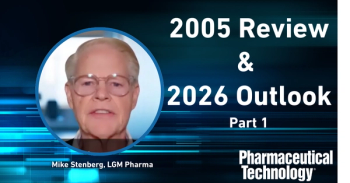
3 Reasons FDA Says Quality Investments Are Essential for Drug Manufacturers and Patients
Key Takeaways
- Incremental investments in quality management systems can yield significant financial returns, reducing product defects and waste while improving resource allocation and operational throughput.
- Mature quality management practices enhance public health by stabilizing supply chains and preventing drug shortages, crucial during high-demand periods like the COVID-19 pandemic.
FDA’s latest whitepaper shows how scalable quality management investments in pharma reduce costs, improve reliability, and help prevent drug shortages.
FDA’s Office of Pharmaceutical Quality (OPQ), part of the Center for Drug Evaluation and Research (CDER), announced on July 29, 2025, the publication of a new whitepaper, “Quality Management Initiatives in the Pharmaceutical Industry: An Economic Perspective,” articulating how investments in mature quality management practices offer measurable returns both economically and in terms of public health (1).
The report's findings are grounded in economic modeling, real-world case studies, and a sector-specific cost-benefit analysis. Below are three ways in which the whitepaper presents key implications for industry professionals to heed.
1. Economic incentives for manufacturers
The whitepaper emphasizes that even incremental investments in quality management systems can yield significant financial returns (1). It outlines a multistage economic model with four scenarios—minimal, suboptimal, optimal, and overinvestment—that map how cost efficiency improves with increasing investment in quality. At the optimal investment level, manufacturers report reductions in product defects by over 50% and waste by 75%, along with improved resource allocation and operational throughput (1).
For manufacturers, the data provide a compelling business case to scale or reconfigure existing quality programs, particularly as the gains extend beyond compliance and into cost reduction, profit maximization, and productivity improvements. Strategic investments can be tailored to each company’s scale and maturity, mitigating financial risk while still unlocking operational value.
2. Public health considerations and drug supply reliability
Beyond financial returns, mature quality management practices also serve a critical public health function. The OPQ paper details how quality-driven manufacturing processes contribute to supply chain stability and help prevent drug shortages (1). Case studies illustrate how process improvements—such as adopting Lean Six Sigma and digital twin technologies—enabled timely product delivery even during periods of increased demand, such as the COVID-19 pandemic (1).
These insights are especially relevant for pharmaceutical developers managing complex global operations or aiming to mitigate reputational and regulatory risks. Ensuring uninterrupted medication availability can prevent treatment delays, adverse patient outcomes, and the downstream economic and logistical burdens faced by health systems during shortages.
3. Scalable, non-binary investment model
The whitepaper de-emphasizes the notion that quality management upgrades must be large-scale or resource-intensive from the outset (1). Instead, OPQ presents a scalable framework in which incremental investments, such as enhancing training programs or supplier oversight, can produce returns at each stage of a company’s development. Companies can move from suboptimal to optimal performance gradually, aligning improvements with broader business strategies (1).
This flexibility opens avenues for smaller firms or those with limited capital to adopt quality-enhancing practices without overextending resources. The model also supports more agile responses to changing regulatory expectations, market demands, and internal process inefficiencies.
“In this ever-evolving global landscape, the costs of investing in quality management initiatives are outweighed by the far-reaching economic and societal benefits,” the whitepaper says in its conclusion (1). “With the return on investment for both companies and public health, investing in quality management initiatives is an opportunity that pharmaceutical companies cannot afford to lose.”
More guidance on quality culture standards can be found
That discussion was published in the
References
1. FDA/CDER/OPQ, “Quality Management Initiatives in the Pharmaceutical Industry: An Economic Perspective,” Whitepaper, July 29, 2025.
2. Cushing, M. and Schniepp, S.J.
Newsletter
Get the essential updates shaping the future of pharma manufacturing and compliance—subscribe today to Pharmaceutical Technology and never miss a breakthrough.




